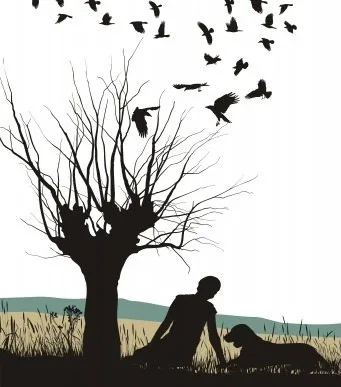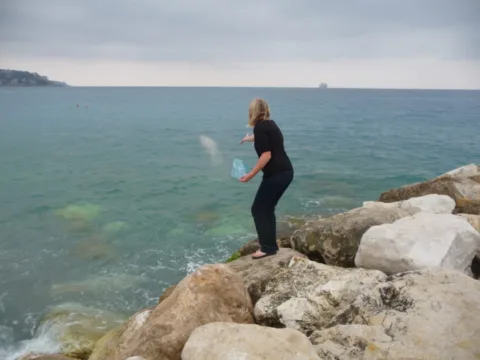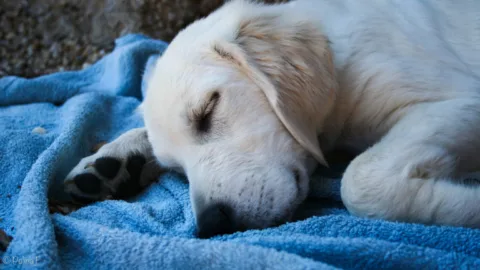The absolute worst nightmare for any dog owner is the death of your beloved companion.
Some prefer for their animals to die at home and prepare for it accordingly.
But what if it happens when you least expect it? What should you do first? Who do you call?
Not only do you have to cope with the loss of your dog, but now you have to face the complications that arise from having to deal with the body.
No pet owner wants to think about this. But it’s an event that you should be prepared for.
First Things First
Give yourself a moment to grieve — whether it is a quick cry or a long sob.
Losing an animal is tough and shouldn’t be treated lightly. After you’ve had your moment, it’s time to figure out your next steps.
Depending on the time of the day and season, you may not be able to remove your dog’s body right away (ex. holidays, middle of the night, etc.).
Veterinarians or cremation centers might be closed or unable to pick up the body until the following morning or the next business day.
TIP: Before proceeding, I recommend calling someone for support or help. No one should have to go through this alone. Having someone there to help with the handling of the body will not only help you physically, but mentally as well. The support of your family and friends is crucial at this time. You should not face this alone.
If you start to feel overwhelmed, have someone else handle your dog’s body. There’s no shame in that. When my pet hamster died, I couldn’t cope with having to see the dead body, so I enlisted my father to take care of it. It’s a traumatic event to have to experience and having assistance is wonderful.
During the warmer seasons, the body will begin to decompose faster. You’ll want to store it in a cool place until it gets picked up.
Here are a few tips for handling your dog’s body:
- Wear gloves to prevent bacteria and germs from spreading.
- Be aware of rigor mortis (stiffening of the joints). This usually occurs within 3 to 4 hours after death and can last up to 72 hours. This makes it especially difficult to move the body.
- Wrap your dog’s body in a blanket or sheet.
- Wipe up any fluids from the body and the surrounding area.
- Store in a cool place until it can be picked up.
Hopefully, having to do this will be a last resort. In most cases, veterinarians or cremation centers (or animal control) will quickly take care of the body for you.
What To Do If Your Dog Dies At Home
Should you call the veterinarian or animal control?
Can you bury your dog in your own backyard?
Luckily, there are many different ways to tackle this. I’ve listed the top 3 options for you to choose from:
Option #1 – Call Your Veterinarian
The first person you’re likely to think of when your dog dies at home is your veterinarian.
Veterinarians usually have a long-standing relationship with a local cremation center.
Most veterinarians will require you to drive your pet to their office in order to proceed. Some vets have a pick-up service.
From there, you have 2 choices:
- Have the vet cremate the body and dispose of the ashes.
- Have the vet cremate the body and return the ashes to you.
Out of the 2 options above, having the vet cremate and dispose of the ashes is usually less expensive.
Cremation is more costly — although it depends on where you get it done and the size of your dog. Retaining your dog’s cremated ashes can be a wonderful way to commemorate your beloved pet. (See below)
TIP: You may take your dog’s body to your vet’s office to save on costs, but this might not be the best option if you’re too emotional to handle the body. Personally, I would prefer to say my goodbyes at home and have someone else handle the body, as I would be too emotionally distraught. If you find yourself in the same boat as me, select an alternative option.
Option #2 – Contact A Local Cremation Center
Skip the veterinarian and go straight to the source.
Cremating deceased pets and saving the ashes has become a popular option these days.
While it is the more expensive option, it’s also one of the most memorable.
You can turn your dog’s ashes into beautiful a memorial:
- The ashes can be stored in traditional urns.
- Many wear their pet’s ashes in gorgeous cremation jewelry. The jewelry keeps your dog close to your heart and it’s small enough to wear. And don’t worry, most cremation jewelry pieces don’t look like they are storing ashes inside of them. They simply look like beautiful necklaces or bracelets.
- Some pet owners have even created artwork from a dog’s ashes (personally not my cup of tea, but to each their own).
- You may decide to spread your dog’s ashes somewhere special.
Cremation centers are usually quick to respond and to pick up your deceased pet.
You can find a local cremation center through your vet or Google. There are also pet crematories that specifically deal with deceased pets.
TIP: In addition to having your dog’s body cremated, some cremation centers will hold a private ceremony to honor your pet — much like a burial ceremony. It’s a special and unique way to remember your dog’s life.
Option #3 – Bury The Body
This option is the least expensive of the 3. It requires little to no money, but it does take time and will result in you having to personally handle your dog’s body.
My family and I always choose this option with our pets. There’s something special about having a proper burial for your pet and always having them close to home.
The first pet I ever owned was a black dog named Rocky (named after the great Rocky Balboa). He was the calmest dog and loved to spend most of his time exploring the outdoors.
When I was away at camp one summer, my dog died at home — he was hit by a car and died instantly. My neighbor brought the body of our beloved dog back to my parents who buried and memorialized it with a handmade plaque.
Having missed the entire event, I was saddened to return home to an empty house. I was no longer greeted with excitement when I arrived home and my reading cuddle buddy was gone. I was devastated. Since I missed the burial, I didn’t feel that closure that my parents and sibling had.
Having Rocky buried nearby made it easier for me to cope with his passing. I was able to “visit” him at his burial spot and it was nice to have somewhere to grieve. Eventually, it got easier to manage and I stopped visiting as often. Rocky’s grave is still standing, 7 years later. It’s nice to be able to see his gravestone and be reminded of him.
TIP: If you’re planning on burying your dog, make sure to bury the body at least 3 feet deep and in a place where it is least likely to be dug up. Imagine coming home to find your dog’s bones on the ground due to erosion or local animals & wildlife digging them up. I can’t imagine how traumatizing that would be to experience.
Remember, You’re Not Alone
Choose the best option for you and your pocketbook.
I love my dogs and I couldn’t imagine not doing something special and unique for each of them when they pass, but I also can’t afford to have all of them cremated.
No matter which of the above options you chose, make it a memory to hold onto and cherish.
If you are having trouble dealing with your dog’s passing, remember that you are not alone:
- There are online forums where other pet owners are talking about dealing with the death of their pets.
- There is a Pet Loss Hotline you can call at (877) GRIEF-10.
- Many veterinarians provide support services for families that are dealing with traumatic events — like losing a pet.
- Don’t forget about those around you. I found my friends and family to be the best support I needed to cope with my dog’s passing.







